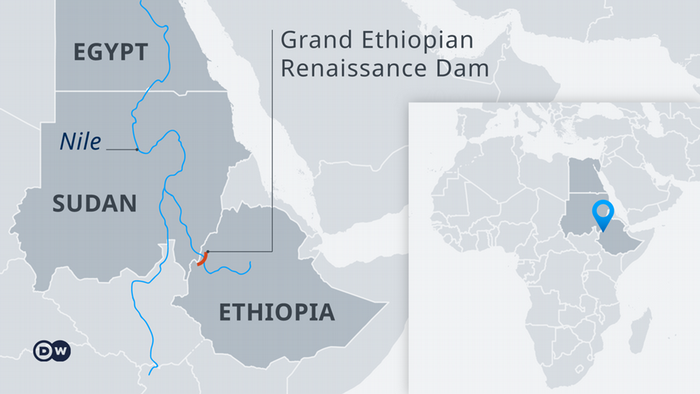International Relations
Stand-Off on GERD
- 07 Jul 2021
- 5 min read
Why in News
Recently, Ethiopia has started the second phase of filling a Grand Ethiopian Renaissance Dam’s (GERD) reservoir on the upper Blue Nile, which raised tensions from Sudan and Egypt ahead of an upcoming UN Security Council meeting on the issue.
- Ethiopia had previously announced it would proceed to the second stage of filling in July, with or without a deal.
Key Points
- About:
- The Nile, Africa’s longest river, has been at the center of a decade-long complex dispute involving several countries that are dependent on the river’s waters.
- Ethiopia began the construction of the GERD in 2011 on the Blue Nile.
- This 145-meter-tall hydropower project is Africa’s biggest dam project and will have lasting impacts on its longest river- Nile.
- Blue Nile is a tributary of the Nile river and it carries about two-thirds of the river's water volume and most of the silt.
- Egypt, which lies downstream, has objected to the construction of the dam and proposed a longer timeline for the project.
- It does not want the water level of the Nile to dramatically drop as the reservoir fills with water in the initial stages.
- Sudan has also been involved due to its location.
- The Nile is an important water source in the region so there are concerns that this dispute may evolve into a full-fledged conflict between Egypt and Ethiopia.
- Recently, the USA has stepped in to mediate.
- Dam’s Importance for Ethiopia:
- Ethiopia believes this dam will generate approximately 6,000 megawatts of electricity which will support its industrial growth.
- It can also export surplus electricity to neighbouring regions to generate revenue.
- Neighbouring countries like Kenya, Sudan, Eritrea and South Sudan also suffer from electricity shortages and they can also benefit from the hydropower project if Ethiopia decides to sell electricity to them.
- Egypt’s Concern:
- Egypt lies downstream and is concerned that Ethiopia’s control over the water could result in lower water levels within its own borders.
- Egypt depends on the Nile for approximately 97% of its drinking water and irrigation supplies.
- The dam would jeopardise food and water security and livelihoods of ordinary Egyptian citizens.
- Sudan’s Stand:
- Sudan too is concerned that if Ethiopia were to gain control over the river, it would affect the water levels Sudan receives.
- However, Sudan is likely to benefit from the power generated by the dam.
- The regulated flow of the river will save Sudan from serious flooding in August and September. Thus it has proposed joint management of the dam.
Nile River
- The River Nile is in Africa. It originates in Burundi, south of the equator, and flows northward through northeastern Africa, eventually flowing through Egypt and finally draining into the Mediterranean Sea.
- The source of the Nile is sometimes considered to be Lake Victoria, but the lake itself has feeder rivers of considerable size like the Kagera River.
- The Nile River is considered as one of the longest rivers in the world.
- The Nile is formed by three principal streams: the Blue Nile, the Atbara, and the White Nile.
- The Nile basin is huge and includes parts of Tanzania, Burundi, Rwanda, Congo (Kinshasa), Kenya.
- The Nile River forms an arcuate delta as it empties into the Mediterranean Sea. Deltas with triangular or fan-shape are called arcuate (arc-like) deltas.
Way Forward
- To solve the conflict peacefully, mediation and facilitation by the neighbouring countries and the international bodies are necessary.
- In case, the attempt to resolve the conflict does not work out by facilitating negotiations between the conflict parties, then a compensation method can be adopted which would need the countries to compensate each others’ losses.





